The Lost History of Women in (Human) Computing Part Three - Henrietta Swan Leavitt
Many people don't truly know how much women have contributed to the field of computing for most of its history. Sometimes they are rendered subordinate, sometimes they are pushed to the background -- and then forgotten.
Thanks to the information age however (made possible by computers), now anyone can look back in time and be amazed at how much women have made possible in computing.
Today we are looking at a figure far more obscure than the previous two in this series (see endnotes) She wasn't related to poetic royalty or apprenticed to computer royalty and she wasn't a stunningly beautiful actress/inventor either. She is however the first actual "Human Computer" in this series. Her name was Henrietta Swann Leavitt and she was simply a woman who did her quietly unsung part in laying a fundamental brick in the great wall of human science. Who was she? What did she do? Read on to find out.
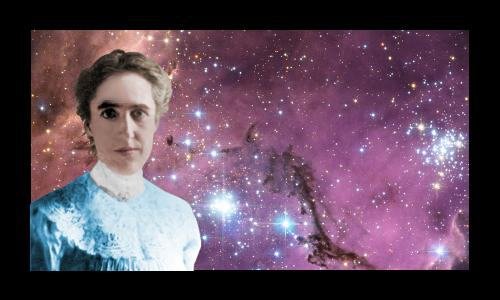
Rewind. Let's see what "human computers" are all about. Interesting fact: according to Etymology.com, the word "computer" dates back to 1640 and refers to "one who computes." This means that, long before we built technology to do it for us, the people who did all the calculations for big projects were the computers.
The Nigerians in the audience or the older readers who remember using log tables to solve maths? Did you ever wonder just who sat down and compiled all those logarithms and sines and cosines and tangents, line by line?
Human computers, that's who!
As we move down through history, what do we see? Before the days of ENIAC and EDVAC, we see rooms full of people (usually women because the men were more expensive to hire and/or were permitted and/or expected to move on to positions of authority) doing the detail work that made the big picture possible.
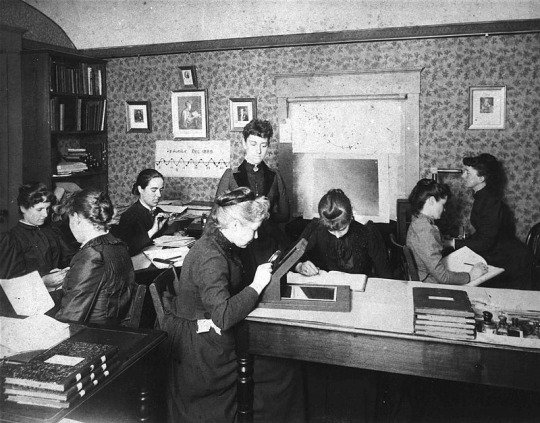
The above picture contains the women of the "Harvard Computers" group that worked under the astronomer Edward Charles Pickering. They were also less flatteringly known as "Pickering's Harem."
I'll just leave that there.
One of those women is Henrietta Swann Leavitt. What did she do that is so special? We'll get there. Let's start with her history.

Henrietta was born July 4 1868 (a good date for a student of the stars lol) in Massachusetts, USA to a church minister father George and a mother after whom she was named. She was the oldest of seven kids. Her father's church work meant a lot of travel so they moved from Massachusetts to Ohio and at some point, back to Massachusetts. Along the way, she started studying music until she became deaf as a result of an unspecified illness.
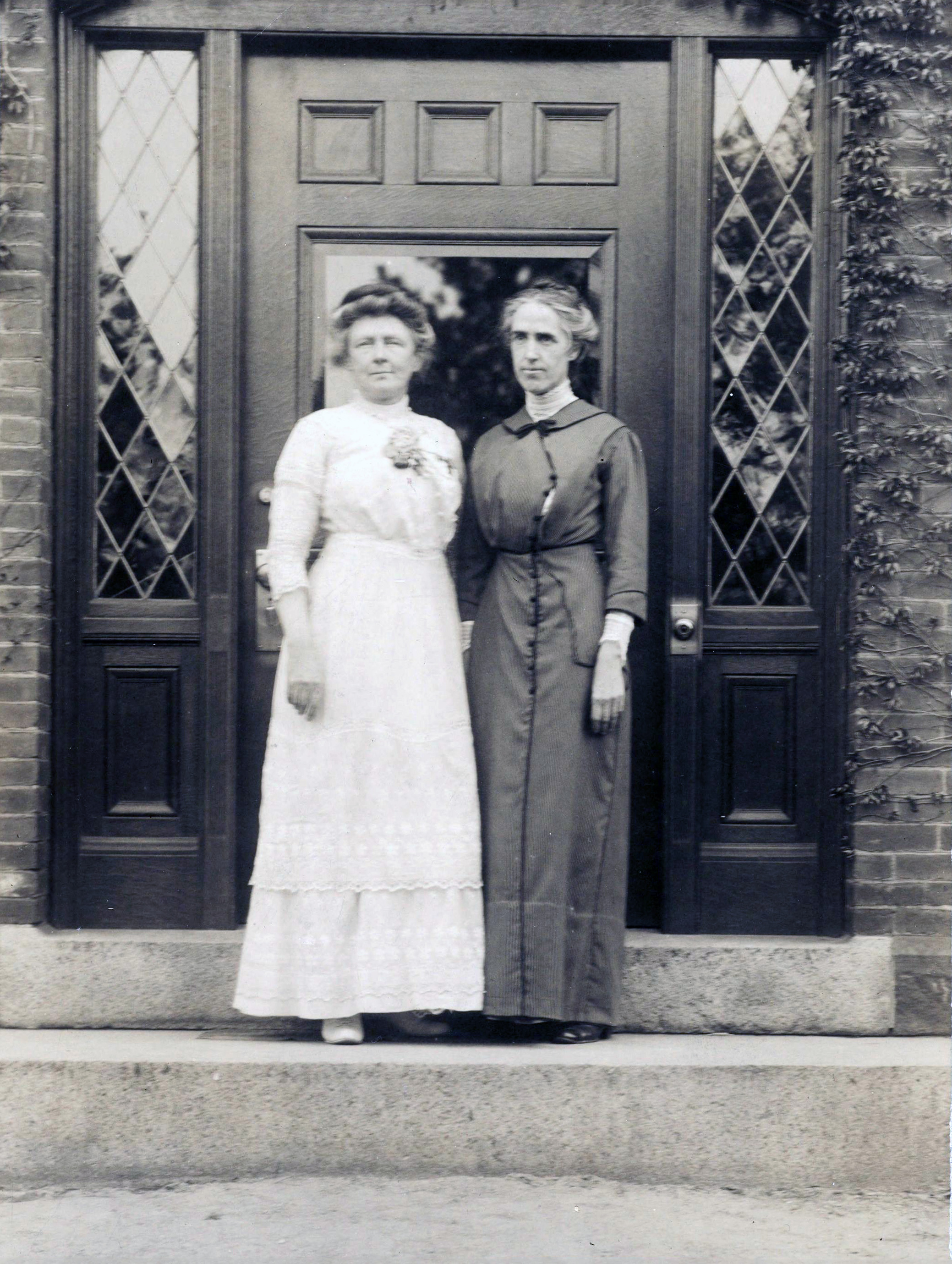
Interesting side-note: she shared that deafness with another female high-achiever in the astronomy field, Annie Jump Cannon. Perhaps removing hearing promotes deeply focused concentration?
When she reached university age, it turned out that, while she was fully qualified to go to Harvard, women were not allowed to go there at the time. Therefore, she went to an all-female institution called the Harvard Annex that would eventually become the famous Radcliffe, a literal sister institution to Harvard. It was in her final year that she did an astronomy course and found her calling. Shortly after, she got a volunteer position and then years later in 1902, a paid full-time position.
As part of "Pickering's Harem" (can you tell that I find this annoying? Because I find this annoying), Leavitt was asked to analyze huge numbers of photographs taken of the night sky as part of a quest to calculate the brightness and position and colour of so many stars.
She soon found herself focusing on those stars whose brightness changed from time to time and the period of that variation – for some starts, the period was days. Others weeks and months.
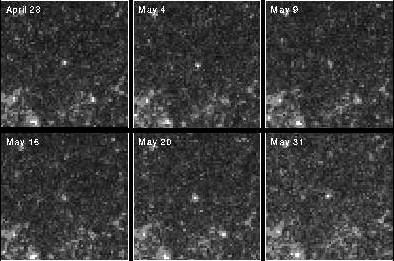
These were called the Cepheid Variables and they would be her legacy.
These Cepheid stars increased and decreased their brightness on a very regular periodic basis. More than that, the period was caused by the brightness and thus could be used to calculate their distance very accurately. With that, the distances of other stars could also be calculated. Now, I am no expert on this (I'm hustling to get into medical school not astronomy department) but what Leavitt did was that she figured out how to accurately measure the distances from earth to all these various stars out there -- and she did it all with nothing but mathematics, patient eyes and limitless dedication.
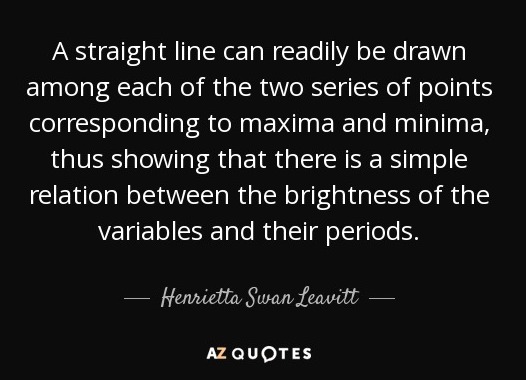
As a result of her ... results, Edwin Hubble was able to come up with his grand discovery that the universe was constantly expanding.
In addition to her main success, she also discovered 2400 variable stars, four novas and came up with a method for determining magnitudes of stars in 108 regions of the sky. There is a document called "1777 variables in the Magellanic Clouds" that collects much of her work.
Leavitt got no big rewards for her achievement (although, at least, the period-luminosity relationship did eventually get named "Leavitt's Law"). Actually, Pickering's name was put on the final reports with her only getting credit for compiling it -- but that's the thing about science, information builds on information so the past must be consulted before the future can be built. Nothing stays hidden and the extent of her contribution began to come out. A famous mathematician of the time (Gösta_Mittag-Leffler) even recommended her for the Nobel Prize -- only to find she had died three years before.
I'll just leave that there too.
Her life is a testament to the fact that hard work and patience can achieve just as much as the big flamboyant geniuses who are celebrated in movies and books and our imaginations of history. Sometimes, it is the simple humble woman, as quiet as the sounds her deaf ears could hear, who sat down and did the work and showed us how to measure the length and breadth of the universe. If one day, you are able to download an app similar to Google Earth that allows you to look at the entire Milky Galaxy and beyond accurately, it will be because of Henrietta Swan Leavitt.

References
https://www.famousscientists.org/henrietta-swan-leavitt/
https://www.space.com/34708-henrietta-swan-leavitt-biography.html
https://www.britannica.com/biography/Henrietta-Swan-Leavitt
http://www.genderportal.eu/blog/henrietta-swan-leavitt-star-astronomer-universes-distances
https://en.wikipedia.org/wiki/Henrietta_Swan_Leavitt
Part One of this series about women making history in computing (human and otherwise) can be found here (starring Lady Ada Lovelace)
Part Two can be found here starring Hedy Lamarr
--
See also the Women At War Series:
Part One - The Lethal Lyudmila Pavlichenko
Part Two - The Formidable Nancy Wake

Thanks for reading and do like the animated gif says!
This post has received a 1.19 % upvote from @bellyrub thanks to: @madmaxfury.
This post has received a 1.04 % upvote from @drotto thanks to: @banjo.
Resteemed your article. This article was resteemed because you are part of the New Steemians project. You can learn more about it here: https://steemit.com/introduceyourself/@gaman/new-steemians-project-launch
This post received a 24.46% upvote from @animus thanks to @edumurphy! For more information, click here!
Hi...
How do we talk? you're not on steemit chat
what's your facebook id?